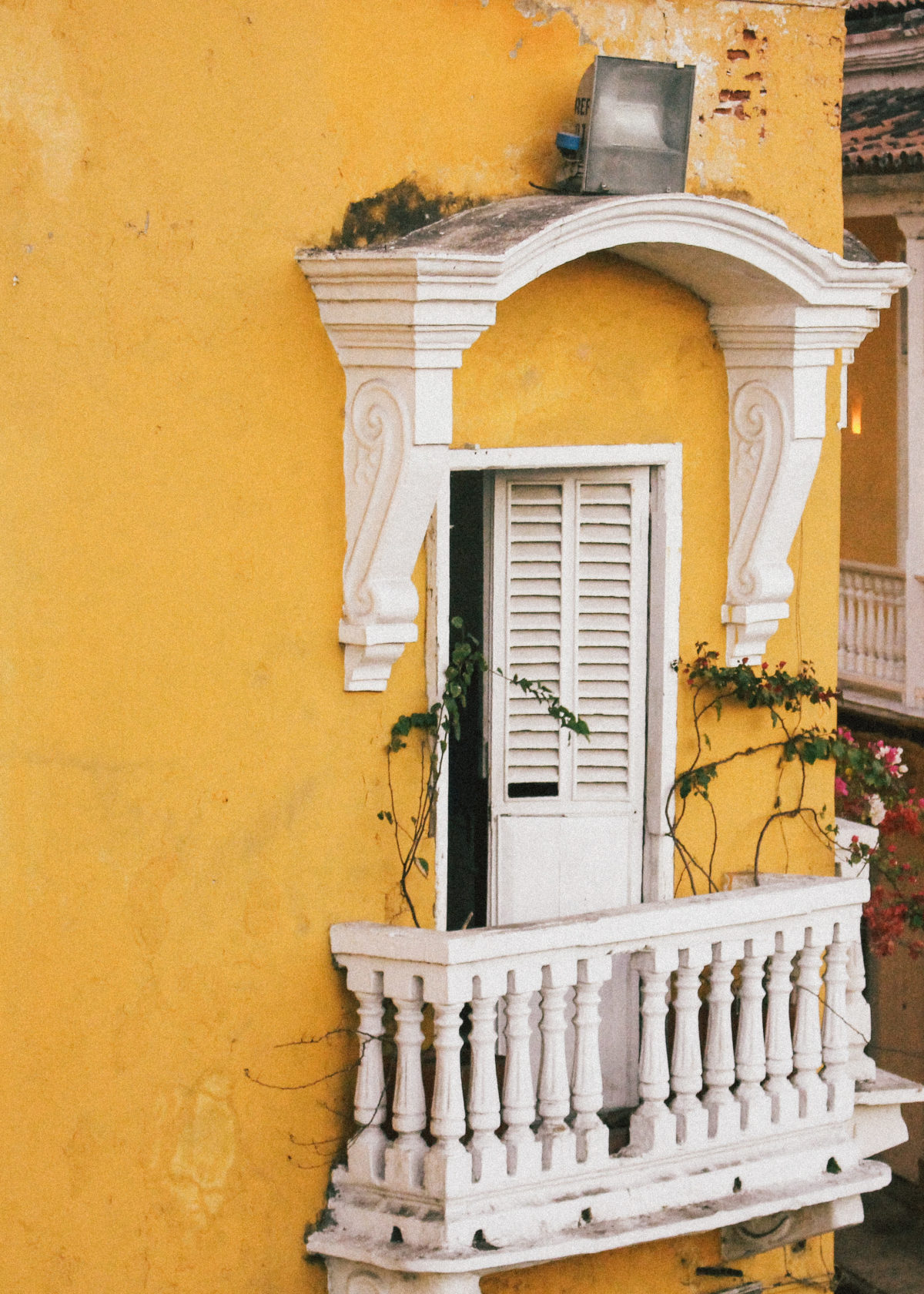We cross over to explore the world beyond Cartagena’s walls.
[envira-gallery id=”2048″]
My research had informed me that Getsemani was bursting with street-art and I was eager to dig through its narrow streets and alleyways to behold the tropically hued murals I had only seen on my laptop screen.
We walk by Iglesia de la Trinidad, a demanding yellow church in the middle of Plaza Trinidad, and stop for a moment to admire the beautiful crumbling walls, rusted door handles and chipping paint. Is it a perfectly rustic place for a photo-op? Or is it a dilapidated sign of the neighbourhood’s poverty? A group of young boys stand in a circle playing cards. An old man with weathered skin and bare feet walks slowly across the square, mumbling to himself. I put my camera down.
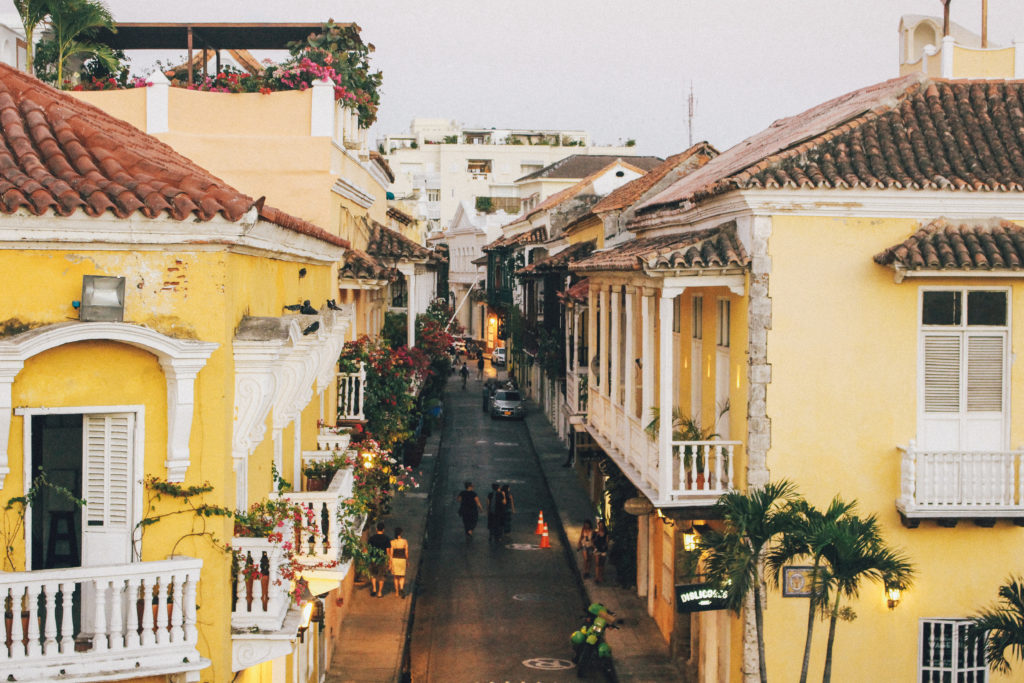
I’m attempting to frame one particularly captivating piece with my camera when I notice through the viewfinder that I am purposely trying to crop out a grocery cart filled with someone’s belongings. Poverty may not be beautiful, but choosing to hide it does not mean it stops existing. To an extent, a meticulously curated social media feed often comes with the consequence of meticulous sanitization of the real world. It becomes habit to crop out impoverishment for the sake of beauty. I take the shot- cart included- and keep walking.
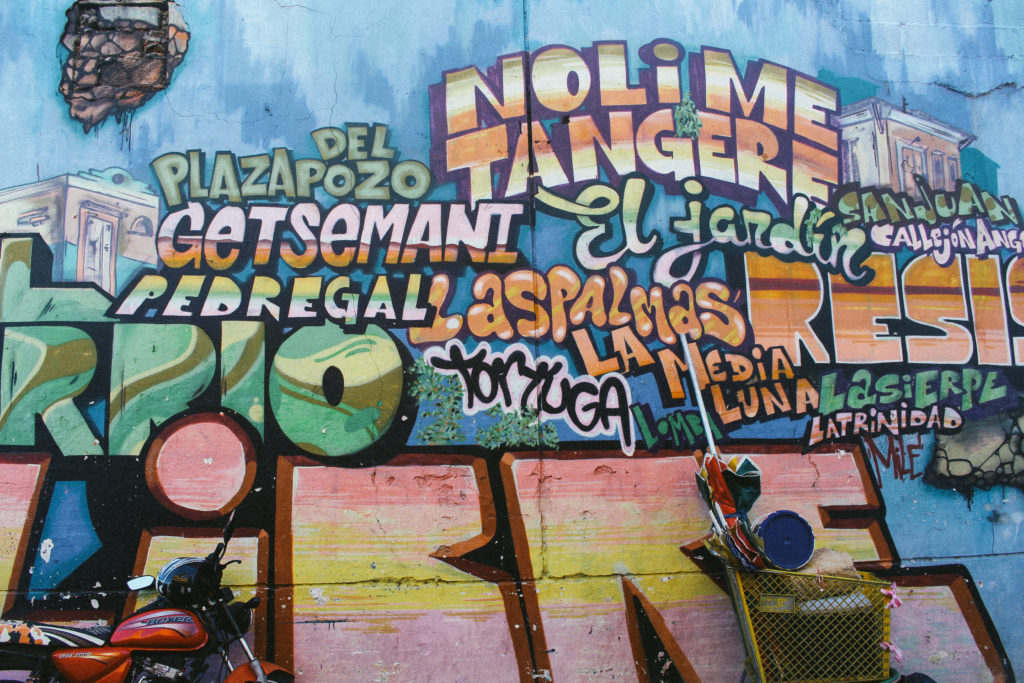
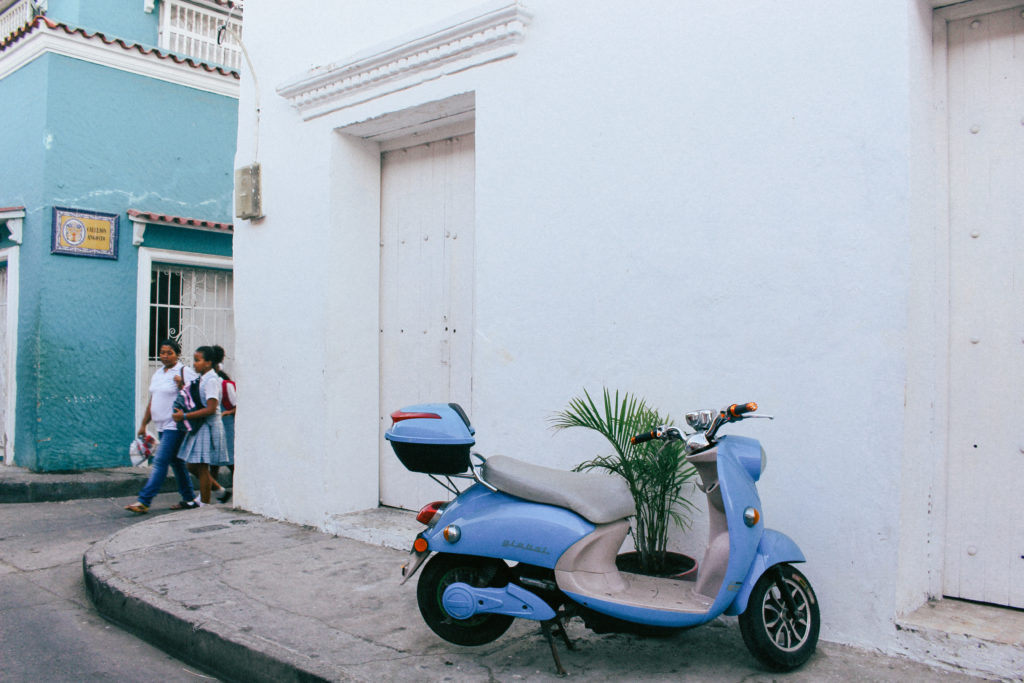
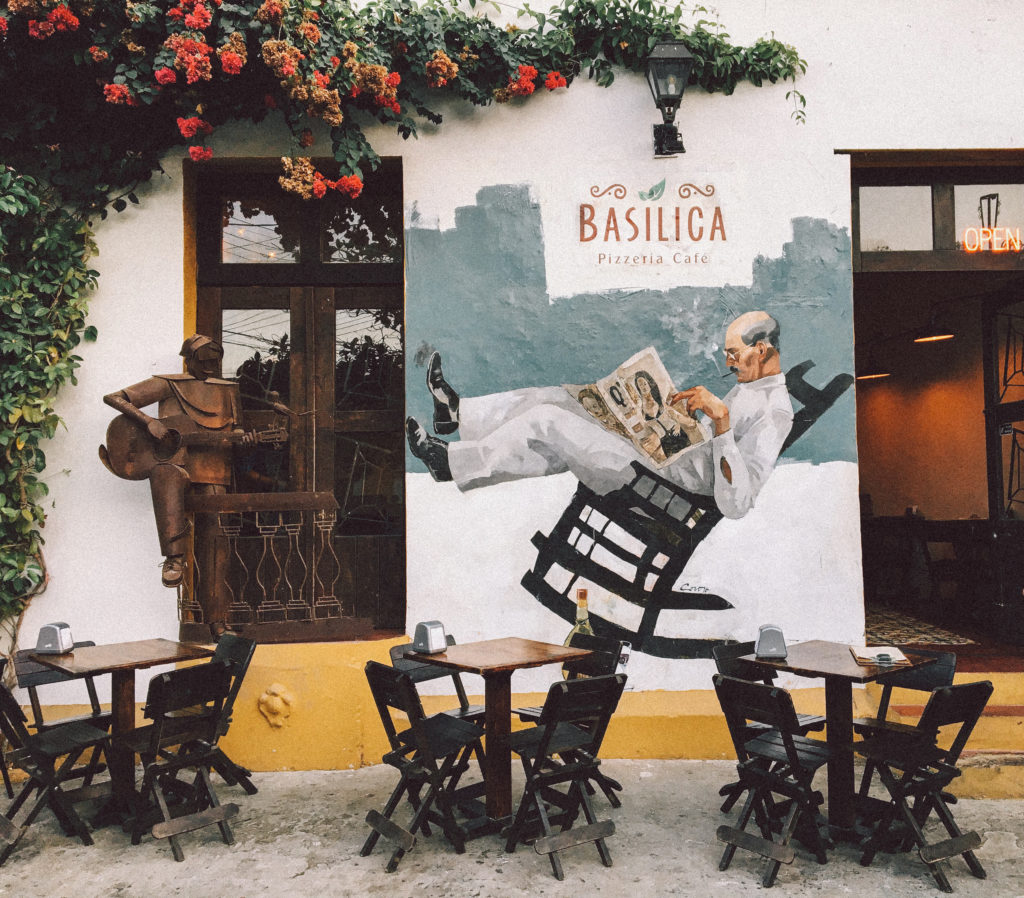
The food in Cartagena is something to remember. The city is known worldwide for its tantalizing ceviche and other succulent dishes. While I delighted in the constant access to fresh seafood, I couldn’t hide my excitement when I was handed a menu and realised this was an Italian restaurant. Pizza. Pasta. We order both.
After loading up on more familiar carbs, we head back to Plaza Trinidad and take a purposeful wrong turn down a street that is glowing blue like the Caribbean Sea. I am mesmerized by the azure walls and intricately carved wooden doors we pass by, the sound of my camera shutter mimicking my beating heart. In the near distance, a bell is chiming and a slow swell of children dressed in school uniforms begins to fill the street. We duck right picking a turn at random hoping to get away from the crowds, only to end up walking through an even more narrow cobblestone path with a low hanging flower canopy overhead. The scene is beautiful and surreal.
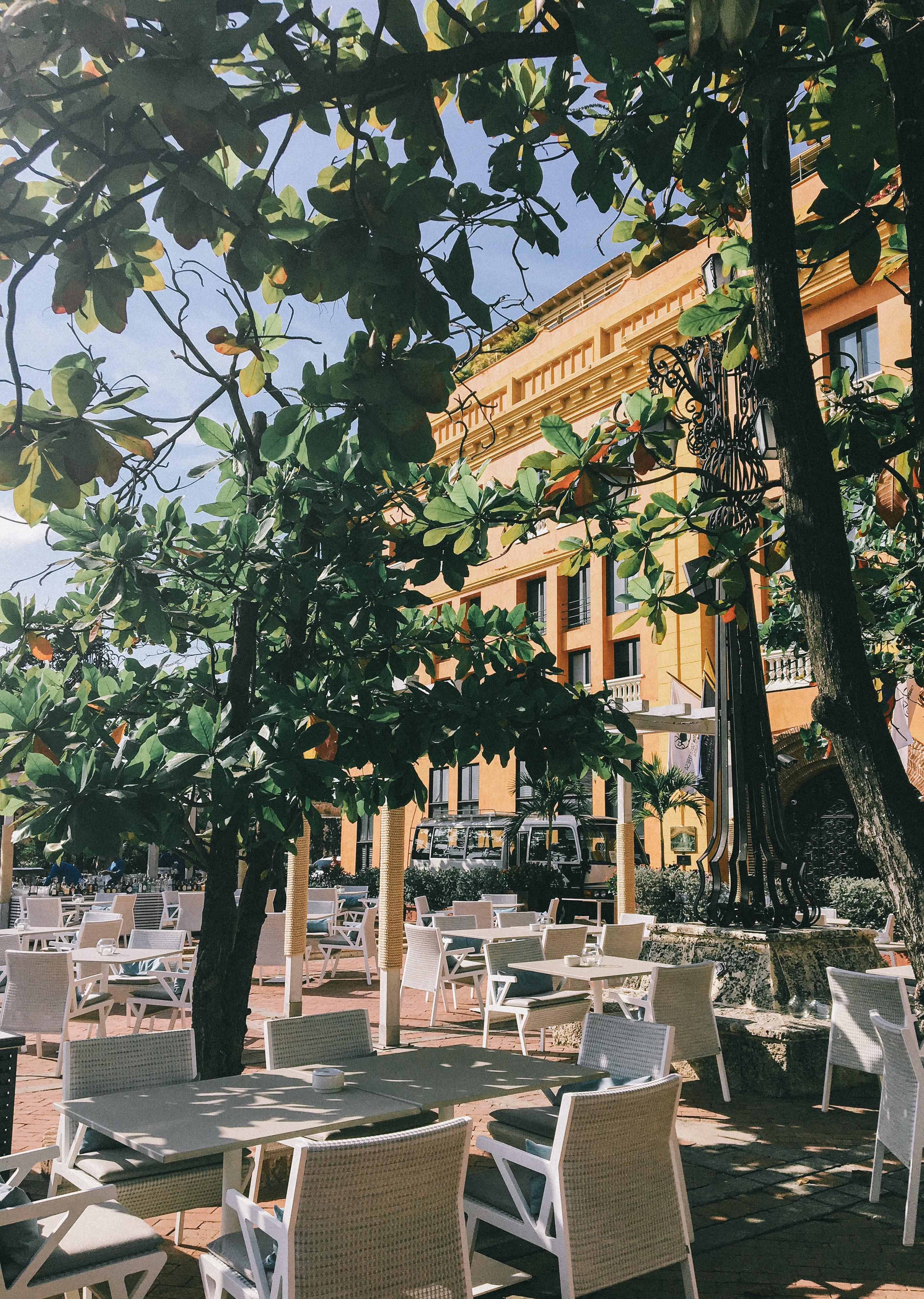
The thing is, when we travel, everything feels out of the ordinary. We snap small moments like these of other people’s lives and use them to declare our thoughts and feelings about a place we’ve visited ever so briefly. We trade stories and ideas and put labels on places where people just like you and I experience the very same mundanity we travel to get away from. The realization of our global sameness in small moments like these brings me a comfort I can only receive when traveling.
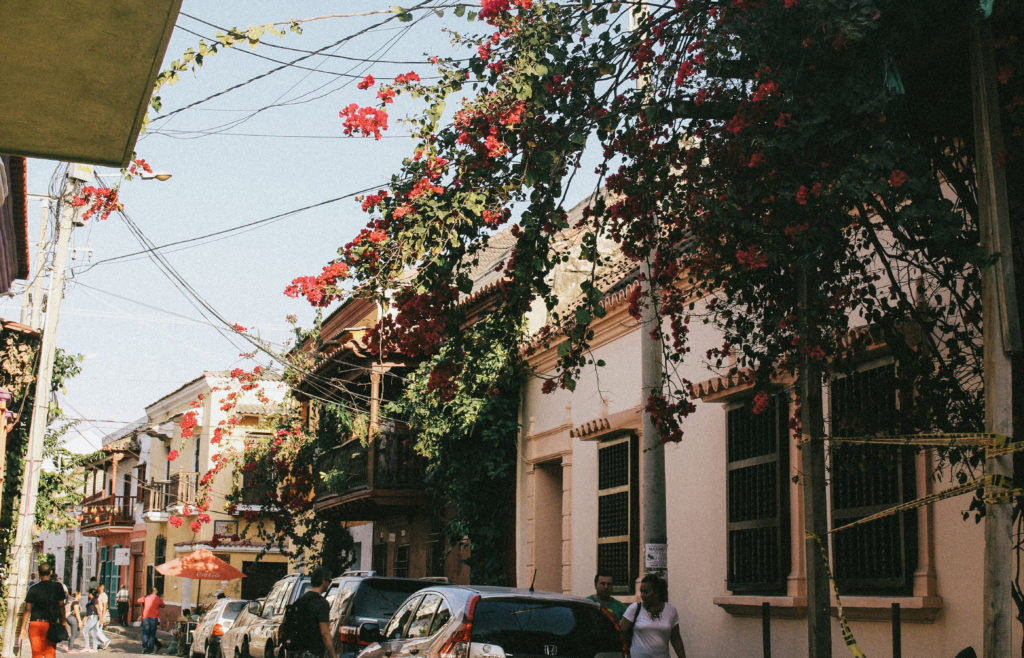
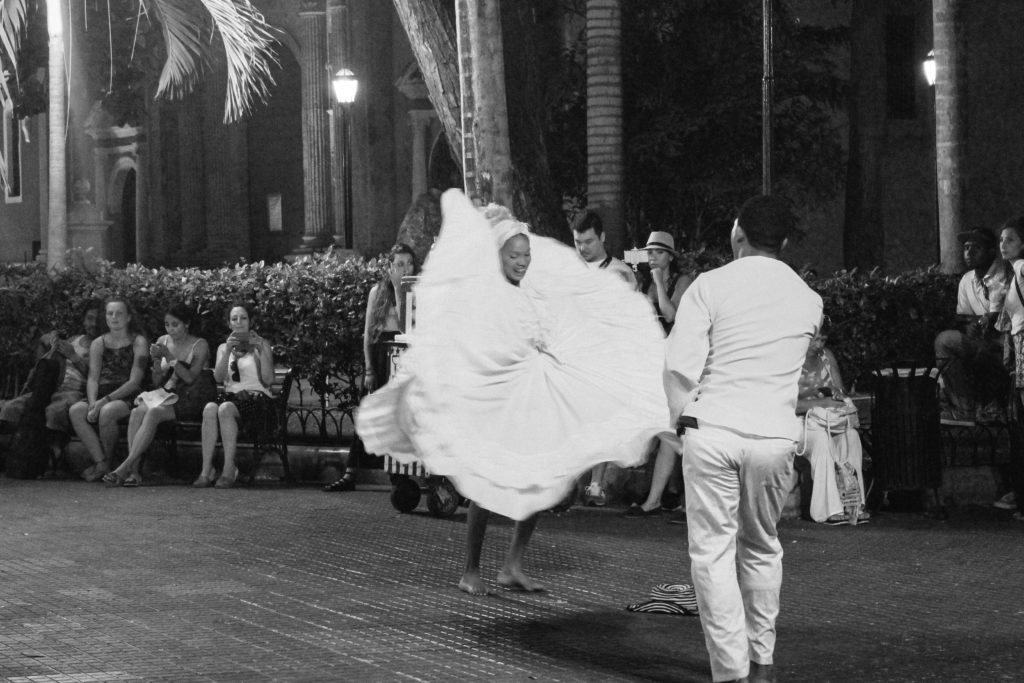
I put my camera down, smiling, as we make our way back to Plaza Trinidad. We take a seat on some inviting rainbow colored Muskoka chairs outside of a bar named “Confussion” and order two mojitos. Marvelling at how the sunset coats everything here in a soft lavender and gold, we can’t help but laugh at how simply wandering around without any sense of direction managed to bring us so much joy in one day. We cheers to our foreignness, our sameness, and the very human spaces between.

